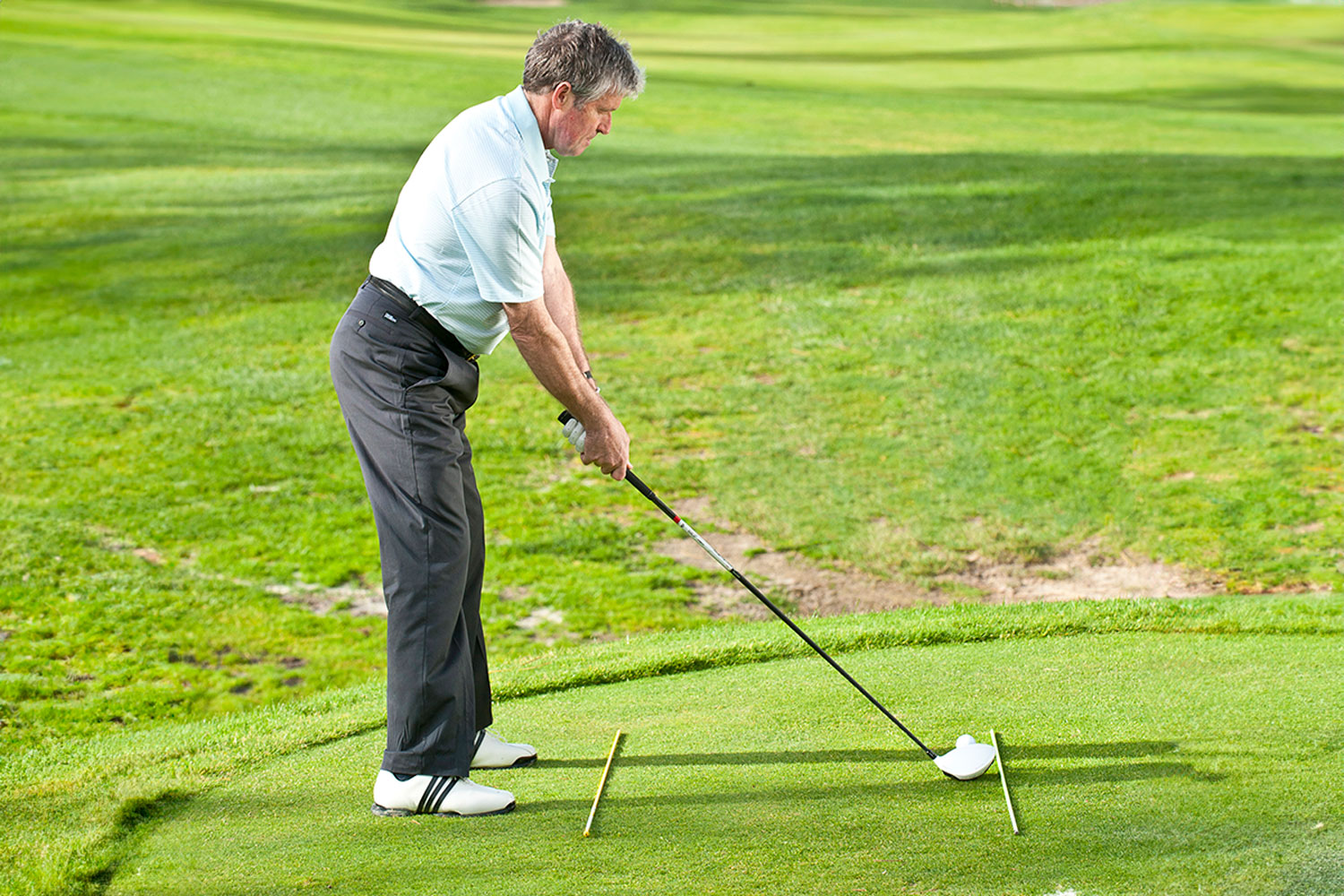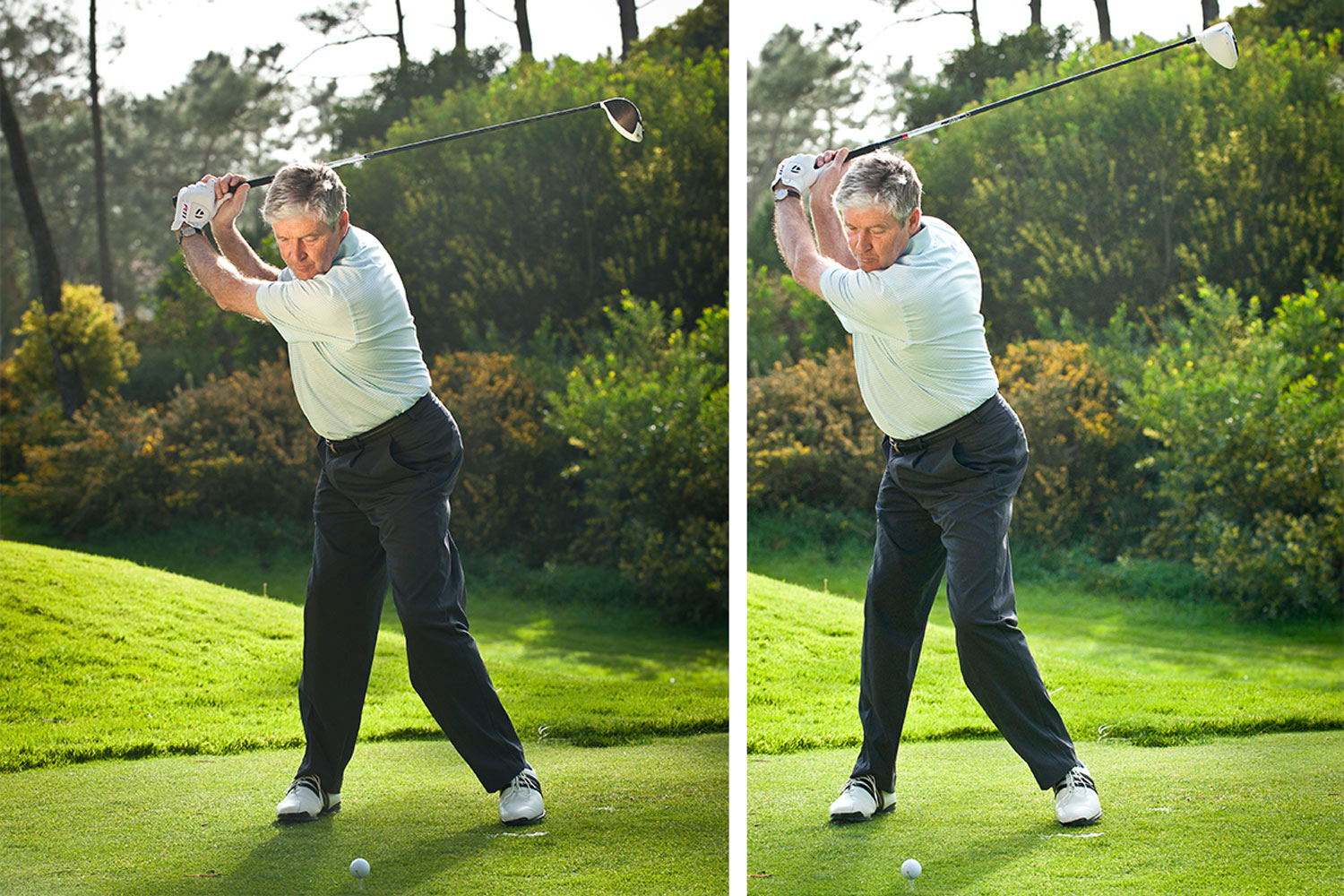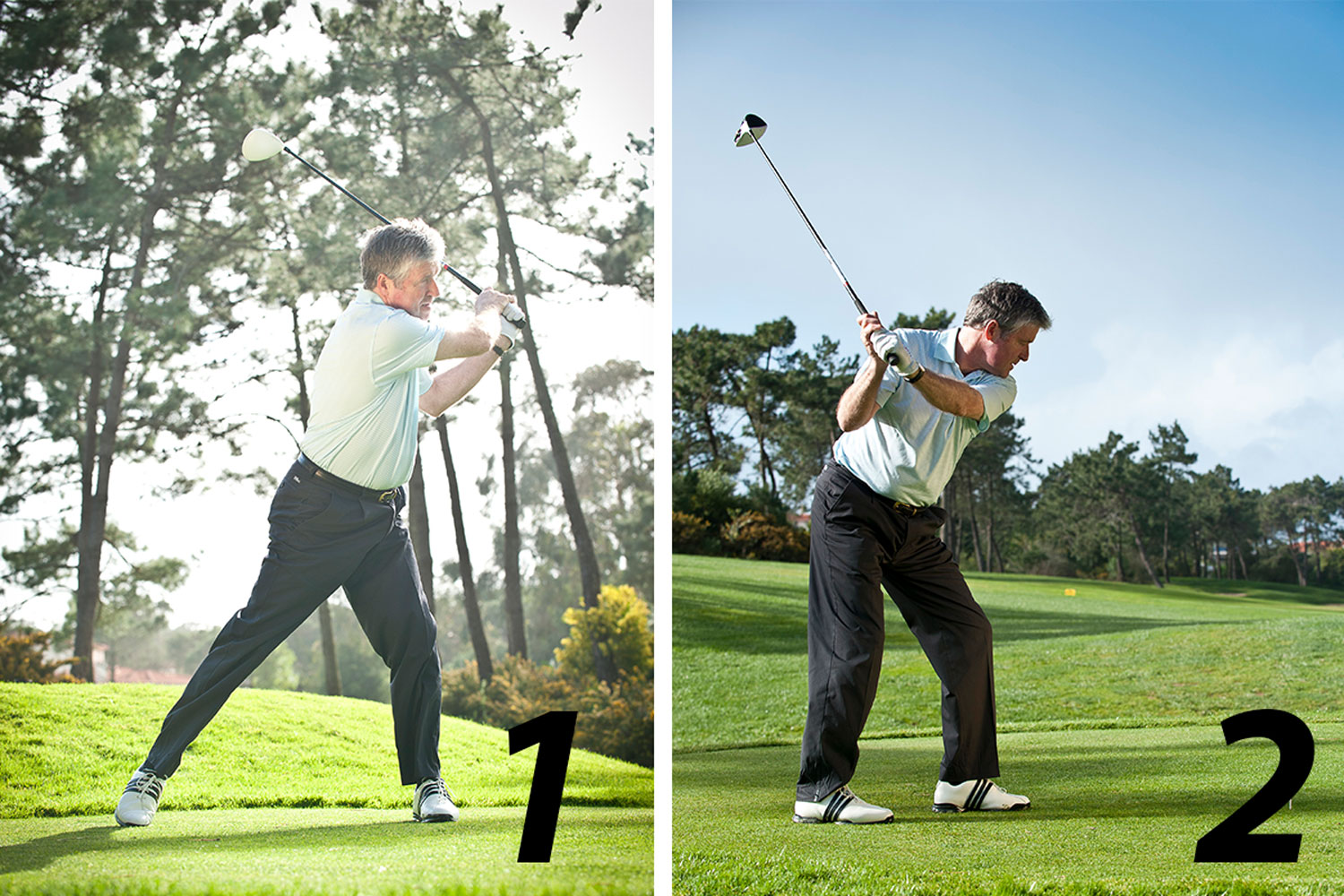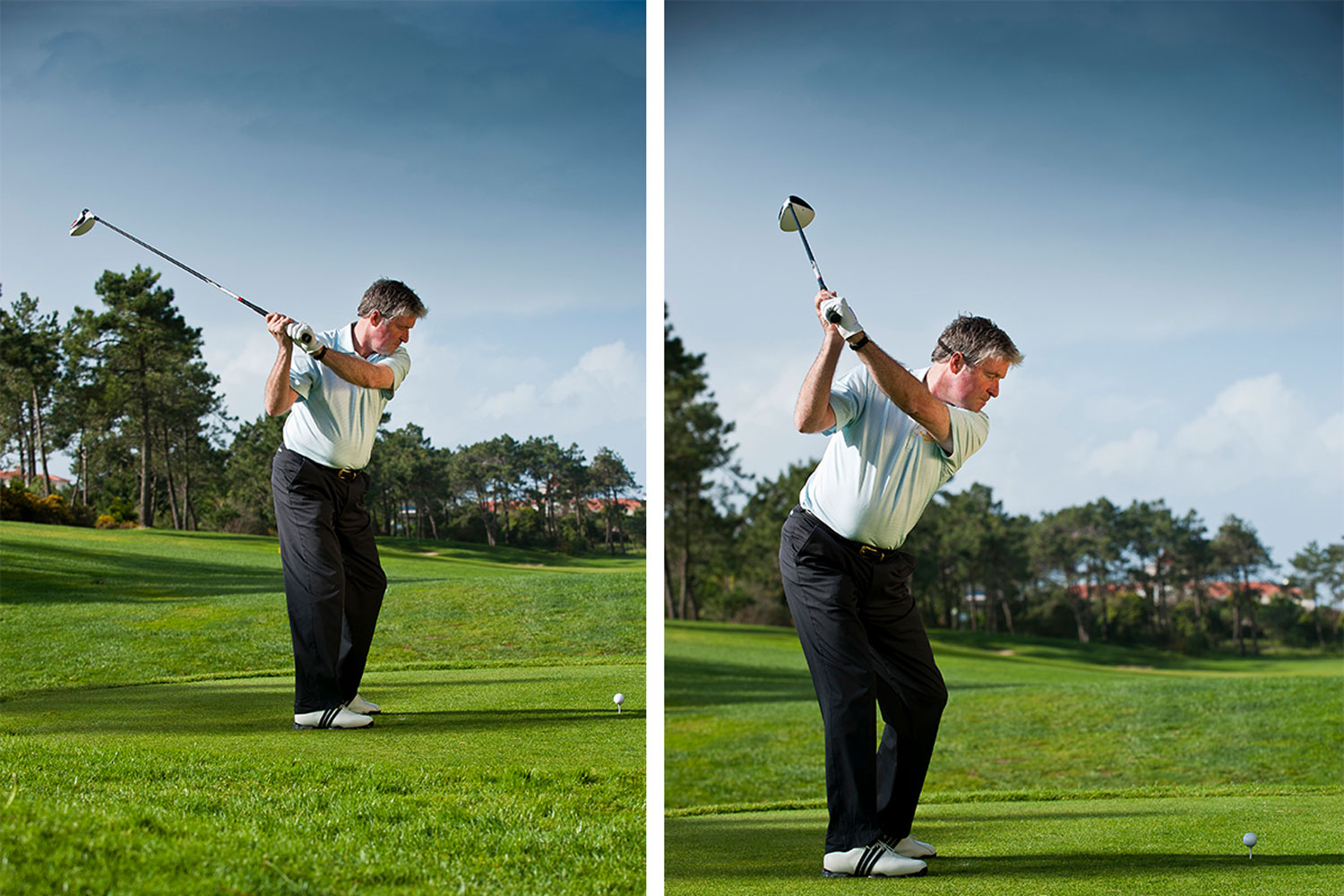
If your game is anything like mine, navigating your way around the golf course with a horrendous slice can be very tricky, especially if you are fond of shooting low scores.
Learning how to stop slicing the ball became a priority of mine this season, and I have to say these expert tips from PGA professional and Top 50 Coach Andrew Reynolds really helped.
Andrew has more than 47 years experience coaching amateurs and professionals, empowering them to improve their golf swing and play better on the course.
In this article, he identifies the common causes of the slice and shares a few practical steps any golfer can take to cure it for good...
Better By Saturday: I Can Cure Your Slice In 60 Minutes
1. What Is Square?

Set up square. It's an instruction coaches give all the time but few actually explain exactly what they mean by this.
It might seem logical to set your feet, hip and shoulders to aim at the target. But this is actually wrong.
Take a look at my address position in the image above. While the club is aiming at the target, my feet, hips and shoulders are not. They are all parallel to the target line. If you are struggling with a slice, the chances are that your alignment is off (your body is likely to be open to your target line).
So the next time you head to the range, work hard to get into this position using golf alignment sticks.
From there you'll find it far easier to make a swing that allows you to hit the ball dead straight.
2. Left Wrist Position

Take a look at the two photos side by side here. You might not think there's a huge difference, but there is.
In the right-hand photo, I'm in a position to hit a straight, powerful drive and in the other I'm likely to hit a slice.
If your left wrist flexes towards your head at the top of the backswing you'll be opening the face and that makes it likely you'll cut across the ball through impact (left image).
Work on keeping that left wrist more solid at the top and you could notice a huge difference to the quality of your drives.
Need a little more info... check out our handy guide on wrist hinge in the golf swing.
3. Release Drills

Having worked on your address position, it's time to think about the swing.
One mistake that many golfers make is to get too defensive with the driver in hand and try to guide the ball down the fairway.
This might seem like the logical thing to do if you are concerned about hitting the fairway but it will only prevent you from making an effective release.
The inevitable result is that you'll leave the clubface open through impact. Here are two drills that will help you guard against this:
1) Widen your stance as I have done here (left) and make a series of practice swings. Your swing will naturally become rounder, improving the release. This is exagerrated in relation to how wide your stance should be in the golf swing, but it will help hugely.
2) Address the ball and then move your right foot back (right). Again this will force your swing to become rounder and activate the release.
4. Swing Path

If you've struggled with a slice, there is a chance your swing is too flat. Starting with an inside takeaway and reaching the top of the backswing position, shown here on the left, is a regular fault.
From here, your arms, body and wrists need to work too hard to square the club through impact. Leaving drives out right is inevitable.
So work on getting the club on a better path (right image). From this top-of-backswing position a good upper body turn and powerful release will not only straighten out your drives, but will add genuine power.
Use a mirror or video your swing to see the right positions and then work to groove them into your game.







